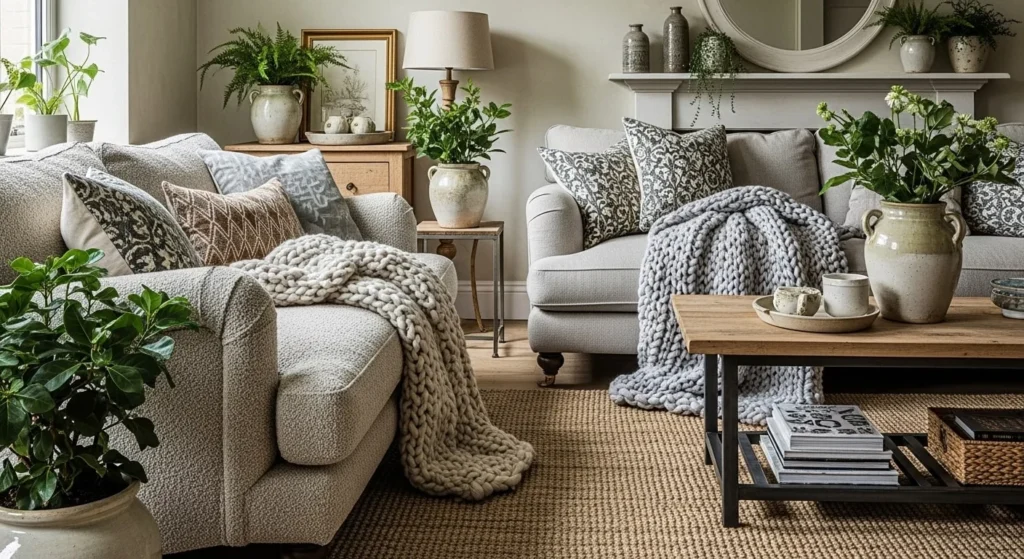8 Textured Living Room Design Ideas to Add Depth and Warmth
When designing a living room, most people think of color palettes, furniture layouts, or decor accessories. But one of the most powerful tools in interior design is often overlooked: texture. Texture adds dimension, character, and warmth to a room, making it feel layered and inviting instead of flat and lifeless. By mixing fabrics, finishes, and natural materials, you can transform your living room into a cozy, stylish retreat.
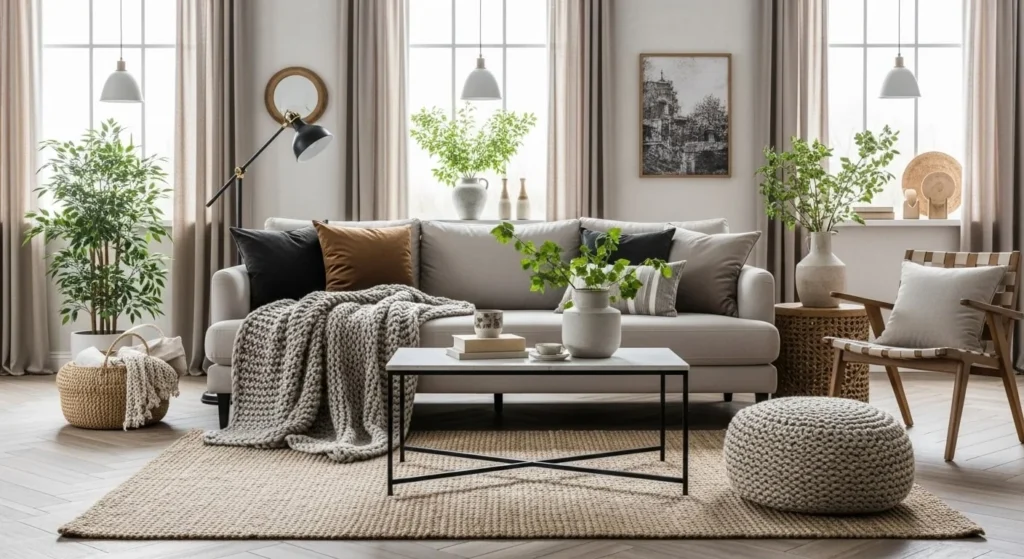
Here are 8 textured living room design ideas to inspire you.
1) Layer Fabrics and Textiles
Why it works: Fabrics are the easiest way to add instant softness and tactile interest.
How to do it:
- Mix fabrics like linen, velvet, wool, and cotton on cushions and throws.
- Add a chunky knit blanket over a sleek sofa for contrast.
- Use layered window treatments (sheer curtains with heavier drapes) for depth.
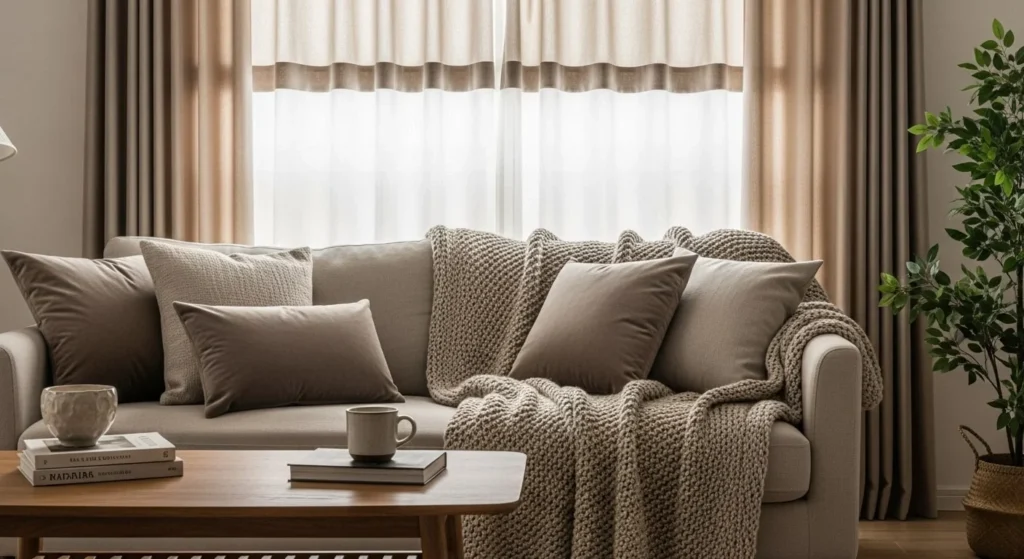
Pro Tip: Keep fabrics in the same color family for a cohesive yet richly layered look.
2) Rugs that Anchor the Room
Why it works: Rugs create a foundation while adding warmth underfoot.
How to do it:
- Choose natural fiber rugs (jute, sisal, wool) for organic texture.
- Try rug layering: a large neutral rug underneath a smaller patterned one.
- Use high-pile rugs in lounging areas to increase coziness.
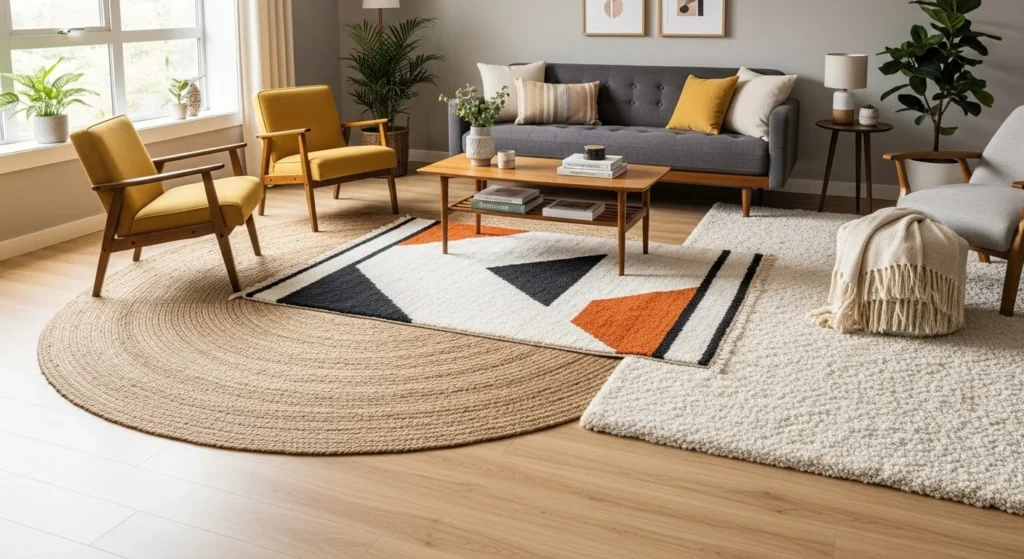
Pro Tip: Always size up—your rug should ground the main seating area, ideally with at least the front legs of furniture resting on it.
3) Textured Wall Finishes
Why it works: Walls are often overlooked but can make a big impact with the right texture.
How to do it:
- Experiment with limewash or plaster paint for a matte, lived-in effect.
- Install shiplap, beadboard, or wood paneling for architectural depth.
- Use grasscloth or embossed wallpaper for subtle richness.

Pro Tip: Keep textured walls neutral in tone so they enhance, rather than compete with, your decor.
4) Furniture with Character
Why it works: Upholstery and finishes bring both comfort and visual depth.
How to do it:
- Mix a velvet sofa with leather or bouclé accent chairs.
- Add a slipcovered armchair for casual, soft texture.
- Use furniture with wood grain, cane backs, or woven detailing.

Pro Tip: Repeat materials at least twice in the room for balance—for example, leather in an armchair and a leather ottoman.
5) Natural Materials for Warmth
Why it works: Organic elements bring earthiness and tactile beauty.
How to do it:
- Add a reclaimed wood coffee table or console.
- Use woven rattan baskets for storage and decor.
- Bring in stone decor like travertine side tables or ceramic vases.
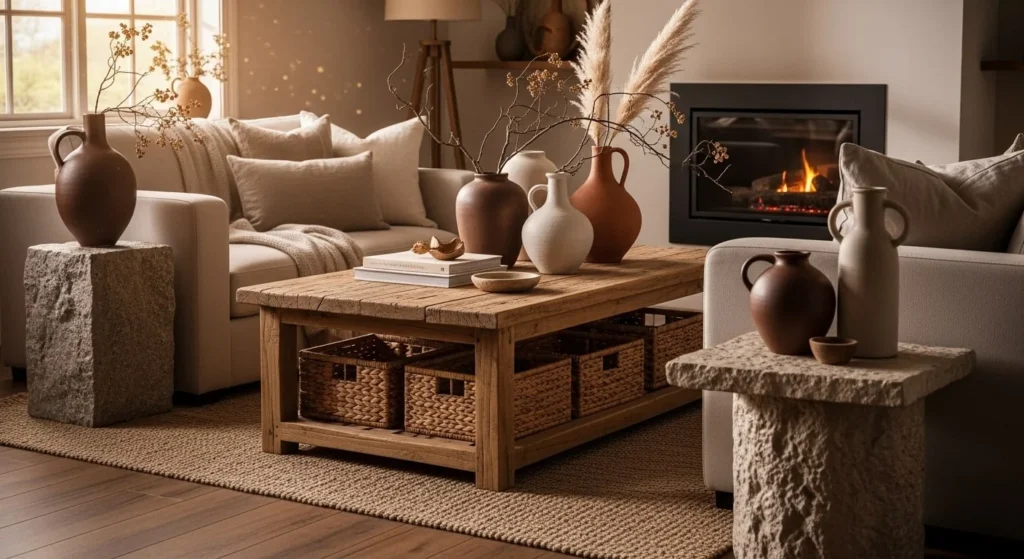
Pro Tip: Pair rough textures (stone, raw wood) with smoother ones (glass, polished metal) for harmony.
6) Accent Pillows with Personality
Why it works: Pillows are small but mighty—they’re the quickest way to add texture.
How to do it:
- Mix fabrics like corduroy, boucle, and embroidered covers.
- Play with details: fringe, tassels, and stitched patterns.
- Combine various pillow sizes and shapes for layered interest.
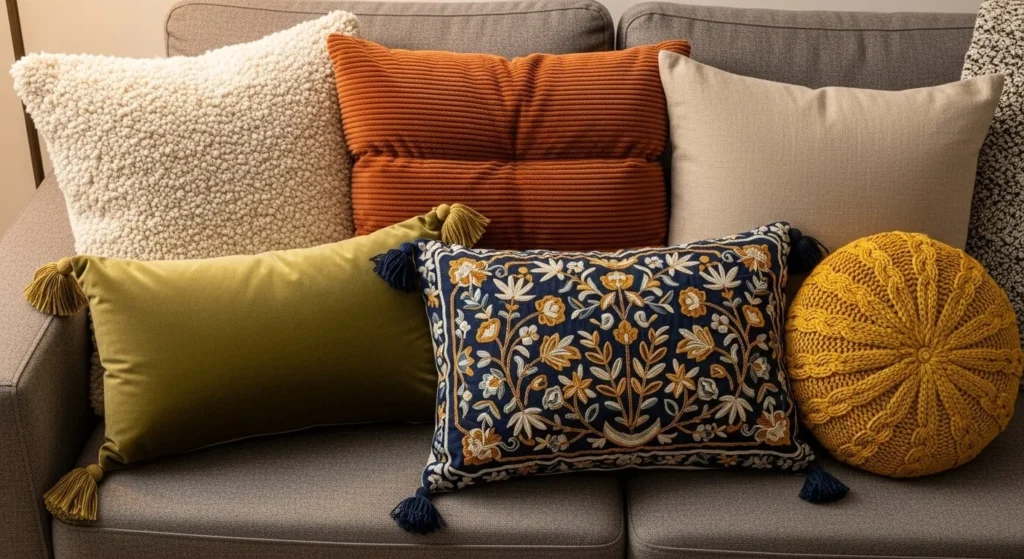
Pro Tip: Keep your base pillows simple and neutral, then add 2–3 accent pillows with bolder textures.
7) Metallic and Reflective Accents
Why it works: Metals and mirrors add shine, which balances softer, matte textures.
How to do it:
- Use brass floor lamps, chrome coffee table legs, or a gilded mirror.
- Add hammered metal trays or candleholders for subtle texture.
- Incorporate both matte and glossy finishes for balance.
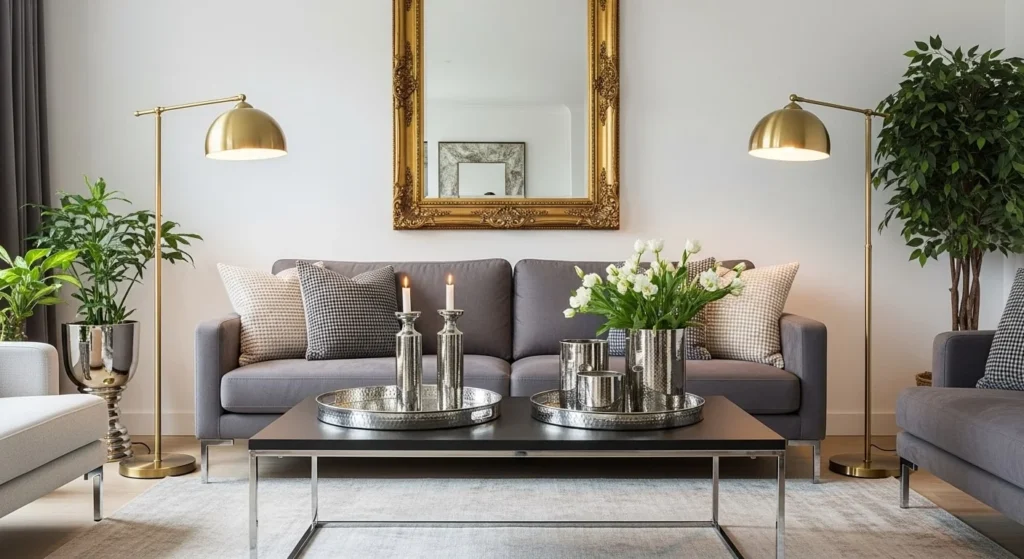
Pro Tip: Stick to two metal finishes (e.g., brass + black steel) and repeat them throughout the space for cohesion.
8) Greenery and Botanical Texture
Why it works: Plants soften hard edges and bring organic texture into your space.
How to do it:
- Add a large plant like a fiddle-leaf fig or monstera in a woven basket.
- Place trailing plants on shelves and smaller textured plants on side tables.
- Use dried botanicals, pampas grass, or eucalyptus in ceramic vases.
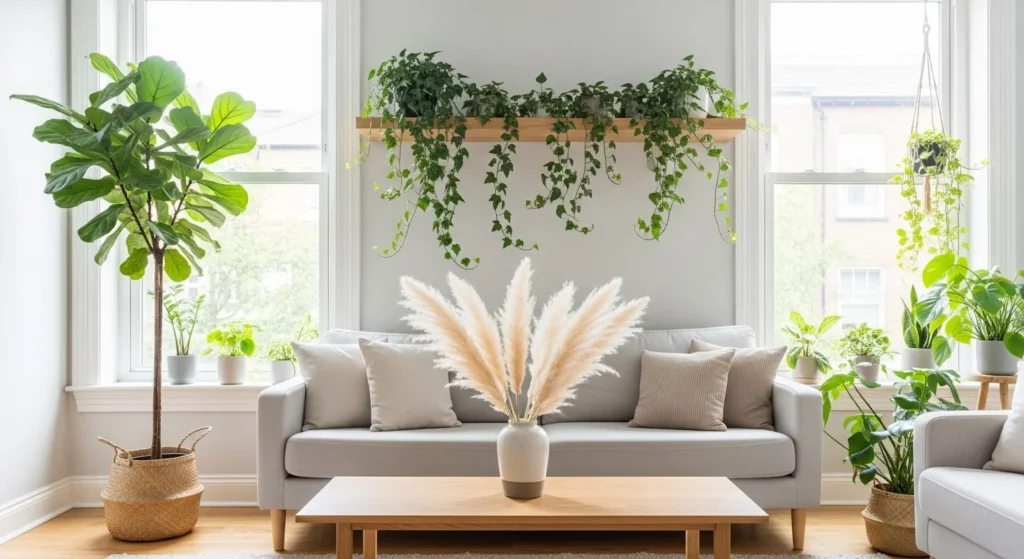
Pro Tip: Mix plant types—broad leaves, feathery fronds, and vines—for a layered, natural feel.
Styling Formula for Balanced Texture
To avoid overwhelming your space, combine textures thoughtfully:
- Soft: Cushions, throws, rugs.
- Hard: Wood, stone, ceramics.
- Shiny: Metals, glass, mirrors.
- Organic: Plants, woven baskets.
Balancing these four categories ensures your living room feels cohesive, warm, and full of depth.
Final Thought
Texture is the secret ingredient that turns a plain living room into a cozy, stylish sanctuary. By layering fabrics, experimenting with wall finishes, and mixing natural elements, you’ll add both depth and warmth to your home. Whether you start with a simple throw blanket or go big with textured walls, each layer makes your living room feel richer and more inviting.
